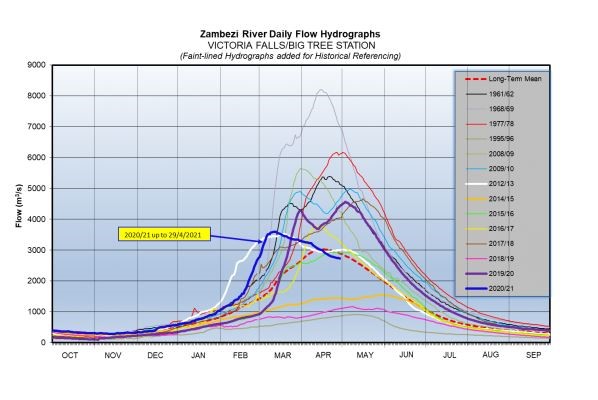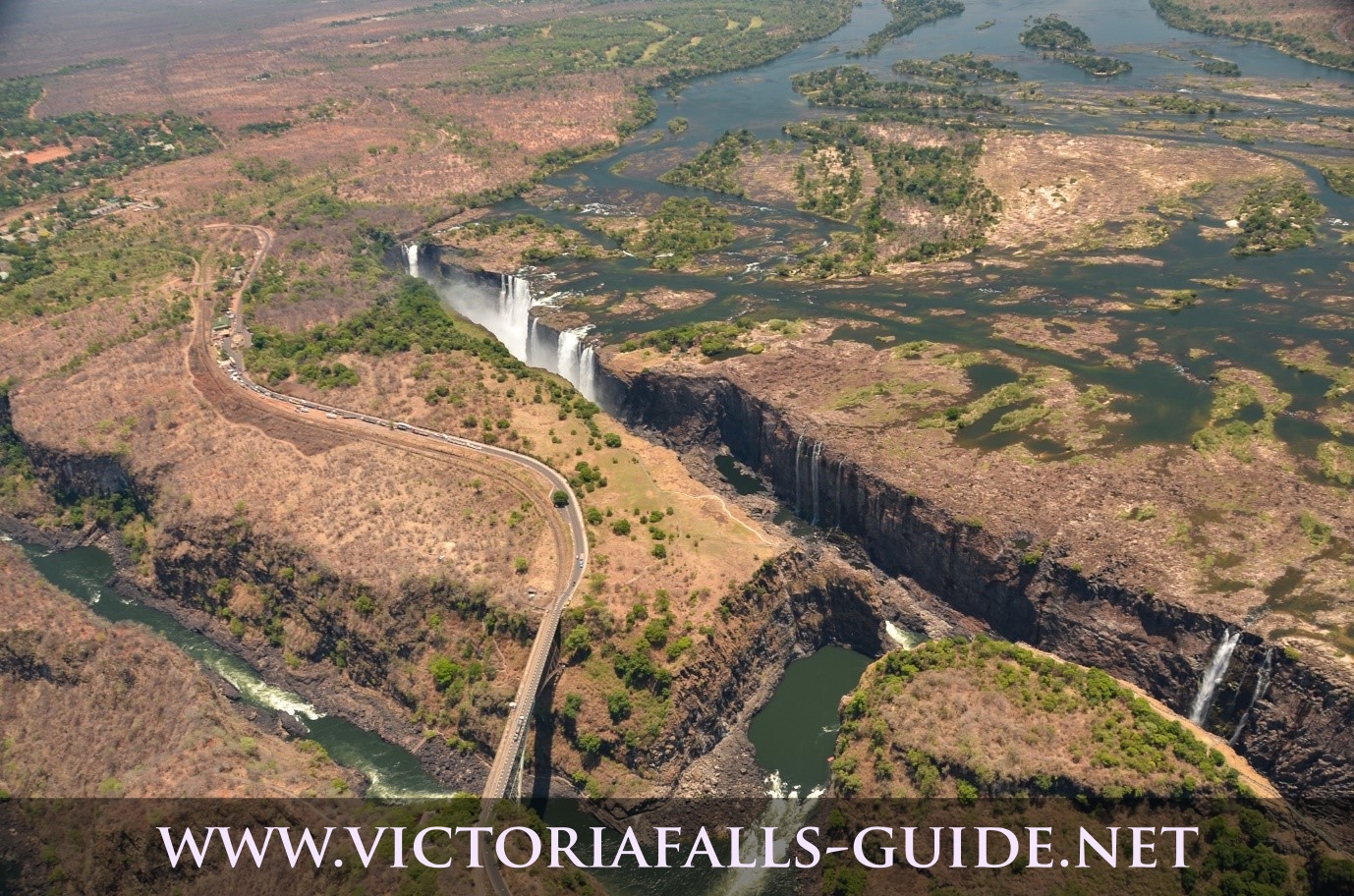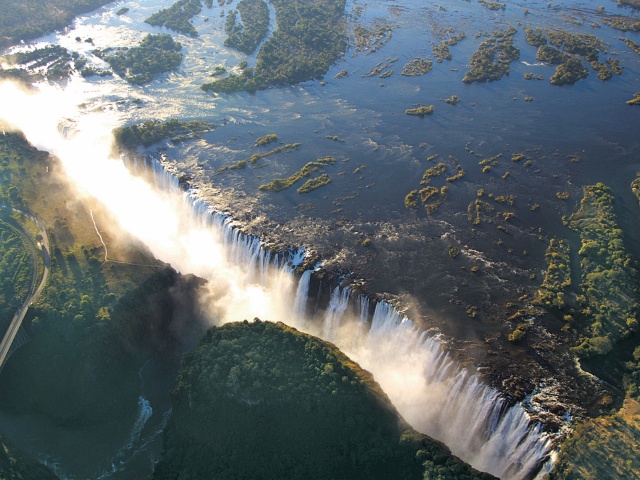Water level or flow of the Zambezi River at Victoria FallsAs the Victoria Falls are so famous, with hundreds of thousands of visitors each year, there is a great deal of interest in the level of water flowing over them, as this affects the appearance of the waterfallThe Zambezi River is approximately 2700kms long. Its source is on the Zambian/Angolan border and its mouth flows into the Indian Ocean in Mozambique. Along its course it has several iconic features which include, the Barotse floodplains, the Ngonye Falls, The Victoria Falls, The Batoka gorges, Lake Kariba, the Lower Zambezi National Parks, Lake Caborra Bassa and the Zambezi Delta. About halfway along its course is one of the seven natural wonders of the world - The Victoria Falls. How much does the water level at Victoria Falls vary throughout the year?Local rainfall traditionally begins in November, when the waterfall is at its absolute lowest. The local rainfall has some impact on the level of the river and it rises gradually throughout November, December and January. However, the main catchment basin for the Zambezi is in the Barotse floodplains of the Upper Zambezi. This vast volume of water flows downstream and only reaches the Victoria Falls around February. It is then that the river starts to rise rapidly. The Victoria Falls reach peak flow somewhere between March and May, after which they start dropping until November when the cycle starts again.
In the Low Water months, around November some sections on the eastern cataract in Zambia dry up, this is normal and happens most years.
The Victoria Falls in the dry season In the High Water months, around late March there is so much water that some views of the Falls are completely obliterated by the rising spray.
So the waterfall is ever-changing, as the Zambezi River continues its perpetual cycle of rising and falling according to the annual rainfall. How much does the water level at Victoria Falls vary from year to year?The low water months year on year are quite predictable, it doesn't matter how much rain there's been in the previous season, by November the water drops to between 100 and 300 cubic meters per second (m3/sec). The high water season however varies greatly every year, dictated by the rainfall during the rainy season, which falls between November and April. Both the low and high water scenarios are Illustrated in the graph above. The official Zambezi River Authority website, which I am presuming to be accurate, states that the highest ever recorded flow rate over Victoria Falls was in March 1958 at 10 000 m3/sec. It is almost impossible to envisage that amount of water. Most years are below half of that with the average high water flow being 3000 m3/sec. The highest I have experienced the Victoria Falls is 5500 m3/sec and at that level the ground shakes and the force is so incredibly powerful, that I can't imagine double that volume. What time of year should I choose to visit Victoria Falls?Choosing which time of year to see this natural wonder of the world is very important, as it will have a definite impact on the experience you have. Hopefully, this page gives you some insight but you can also read more about that here. Victoria Falls weather. Please also read about the Advantages and Disadvantages of travelling in the Low Season. This also explains the difference between the Low "WATER" season which is actually the High Season (most tourists) and the Low Season (least tourists) which is also known and the green season. If you are planning a holiday in advance it's impossible for anyone to predict too far ahead what the rainfall in the upcoming season will be and therefore the level of the waterfall, but you can choose between High water and Low water and the shoulder seasons in-between. If you want to keep abreast with the current season and its rainfall and water levels then click on the link below.
* |
|
||
|
|
|||
|
|
|||
|
| |||






